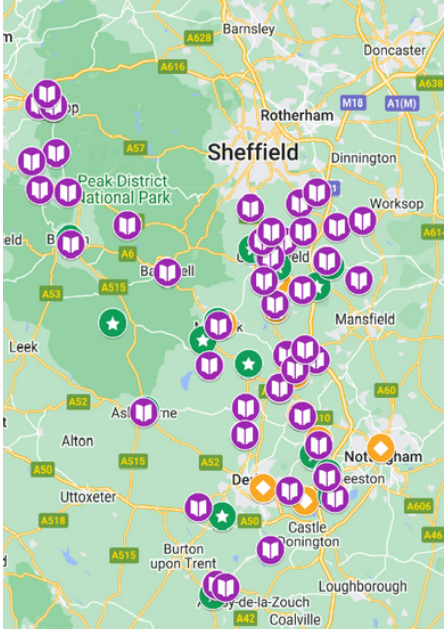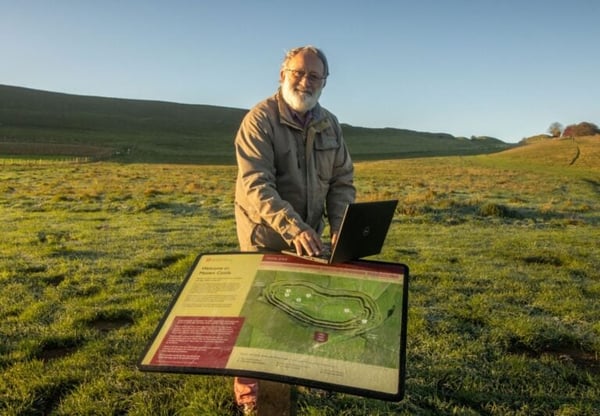Leeds City Council launches blueprint for digital inclusion
The 100% Digital Leeds team - part of the Integrated Digital Service at Leeds City Council and NHS (Leeds) West Yorkshire Integrated Care Board - has seen its innovative, community-based approach to digital inclusion hailed as a shining example of best practice for local authorities in the UK.
The team, which works with over 200 organisations and services across Leeds, has secured £2 million of external funding into the city to improve the digital inclusion infrastructure in communities, and to strengthen the levels of digital engagement among individuals.
Now, for the first time, there is a digital inclusion blueprint for other local authorities to follow suit. Off the back of funding awarded by the Local Government Association’s Digital Pathfinders Programme, 100% Digital Leeds has produced a 50-page guide to its digital inclusion approach with the intention that it can be replicated and adapted by other councils.
The community-based guide describes four stages to creating a digital inclusion programme: finding the focus and partnerships, identifying the barriers, assets, and opportunities, forming and implementing a plan and measuring and demonstrating success. The model is available to download now.
Leonardo Tantari, Chief Digital Information Officer, Leeds City Council and NHS (Leeds) West Yorkshire Integrated Care Board, who has overseen the project from its outset, says his hope is that the guide will provide “much needed inspiration” to other councils.
“We hope to give our peers a clear message that it can be done and it should be done. Already, the response to the guide has been positive with the model having been downloaded almost 100 times and a few councils writing in to ask for further help.”
With other local authorities now looking to embark on their own digital inclusion journey, Tantari shares with Government Transformation Magazine his key learnings on what it takes to break down the divide, and hints the team's plans for a regional rollout.
Digital inclusion as a priority
New research conducted by the Digital Poverty Alliance and YouGov has revealed that one in three UK adults have cut back their spending on digital access during the cost of living crisis. Against the backdrop, Tantari underlines that “there needs to be more acknowledgment that this is a serious issue.”
“The reality is that it tends to slip off the agenda when CDOs and CIO’s have to compromise with the resources that they are given. A lot of local authorities are under so much pressure that issues like digital inclusivity are rarely made a priority. I believe this is something we need to change.”
There are practical and tangible steps that councils can take. For starters, Tantari explains that digital inclusion is a permanent function of the Leed’s City Council’s digital team. “Not a lot of authorities in the UK have a permanent function that looks after digital inclusion. When we published our digital strategy in 2022, we purposely included digital inclusion in that proposal, which means we automatically get approval on this.”
Leadership and accountability
Leeds City Council has a digital team of 500 people, with a core team of seven leading digital inclusion for the city through 100% Digital Leeds. However, not all local authorities have the luxury of a team of that size. Tantari says this is the most common concern he hears from councils who understand that digital inclusion should be a priority, but are limited by bandwidth.
However, he insists that it starts with leadership and accountability. “At the end of the day, it’s less about the size of the team and more about accountability - you can have 1,000 people but if you don't put the right accountability on leadership, it’s not going to happen. Take accountability and if you can’t deliver on the strategy because you have certain constraints, then use other ways to deliver on that fundamental agenda, such as reaching out to other local councils for help.”
Tantari stresses the importance of councils being comfortable reaching out for help. "We hope that with the attention that the programme is getting, people can also reach out to us because we can help where perhaps they don't have the access or capability.”
A key part of the 100% Digital Leeds model is that it partners with and supports trusted community partners and third sector organisations that can help individuals access devices or develop their digital skills. This extends the reach and capacity of the digital inclusion team and also increases the number of people and organisations delivering digital inclusion activities who already have a trusted relationship with those in need of support.
At the same time, it’s important to look at supporting and increasing the capacity of the existing digital inclusion projects in communities, such as device lending schemes or third sector staff working on digital inclusion.
Creating ways to track the benefits that come from better digital inclusion is also key to maintaining accountability. Over the last year, 100% Digital Leeds has been working on new ways to demonstrate both the quantitative and qualitative benefits of the programme, with the view that this will drive further momentum.
Consistent engagement
Digital inclusion does not have a clear end date; it is a continuous process and a multifaceted problem that evolves over time. Individuals who once had access to the internet may lose it, whilst others may need retraining as new technology develops. It therefore requires consistent engagement.
As the digital landscape evolves, it is important to ensure that each community organisation is connected with the right technology providers and other partners through digital inclusion networks. “We have a recurrent topic of continuing and expanding that engagement, as well as bringing on more organisations that can help directly in terms of supporting people, and also providing digital tools.”
Tantari says the team has recently secured additional funding, which they are funnelling into appointing more digital inclusion workers within key third sector organisations. Those staff will work closely with the 100% Digital Leeds team to extend their community-based approach to digital inclusion
Next steps
New projects in the pipeline include an online safety programme for the elderly - for which the team were recently awarded £200,000 from the Department for Digital, Culture, Media and Sport to develop - and a programme aimed at improving digital access for children aged 11-14.
100% Digital Leeds is also preparing to replicate its project on a regional level. The team has just secured an agreement with the West Yorkshire Integrated Care Board, which will see the rollout of its community-based model in West Yorkshire to help drive digital inclusion in the wider region.
Jason Tutin, digital inclusion manager for the 100% Digital Leeds team, will head up the regional approach and is currently focused on growing his team to support the new agenda.
A key challenge ahead will be understanding what the specific regional requirements are for digital inclusion in West Yorkshire.
“Every region will be slightly different so it’s important to determine exactly what people’s needs are first in order to bring in the right interventions. A lot of work must also be done to establish a connection with local digital inclusion leads and community organisations to get them onboard and discuss where interventions can be made to have the most impact,” Tantari said.







